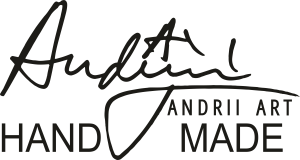When we say that leather is a byproduct rather than a primary product, it directly ties into the broader context of sustainability and responsible material sourcing. Leather is not the main outcome of animal rearing — it is what remains after the primary purpose, which is food production, has been fulfilled.
Here’s a detailed look into why this distinction is crucial:
- The Meat Industry’s Primary Purpose: The global meat industry is designed around producing food for human consumption. Animals such as cows, pigs, and goats are primarily raised for their meat, milk, and other food-related products. The skin that eventually becomes leather is a secondary output — a material that would otherwise be discarded if not utilized for leather production. This transforms leather into a byproduct of the food industry, not a material obtained solely by rearing animals for their hides.For instance, the leather used in Andrii Art’s belts and similar artisanal products comes from animals that have already been slaughtered for their meat. No animal is specifically bred or killed for its hide alone.
- Sustainability and Resource Efficiency: Treating leather as a byproduct aligns with the principles of zero waste and sustainability. Instead of disposing of the hides, which would contribute to environmental waste, they are tanned and transformed into high-quality leather goods. This utilization reduces waste and maximizes the resources already expended in raising the animals for meat. The vegetable tanning process employed by many Italian tanneries, for example, ensures that the hides are processed using environmentally friendly methods that respect the balance of nature(Pelle al Vegetale).
- Regulatory and Ethical Implications: The certification systems and standards set by the Consorzio Vera Pelle Italiana Conciata al Vegetale explicitly mention that the hides used are strictly byproducts. The associated tanneries in Tuscany are part of a consortium that guarantees traceability, ensuring that no animal is killed solely for its skin. This level of certification and regulation further emphasizes the ethical approach behind using leather as a byproduct.
- Economic Considerations: The cost structure of leather also supports its byproduct status. If leather were the primary product, the price would reflect the cost of raising and maintaining livestock solely for this purpose. However, because the primary economic driver is meat production, leather prices are more aligned with the cost of processing rather than production. This reinforces the understanding that leather is secondary in the hierarchy of animal products.
- Environmental Impact Mitigation: By using hides that would otherwise be treated as waste, the leather industry mitigates the environmental impact associated with animal agriculture. The hides, if discarded, would contribute to landfill mass, creating environmental hazards. Instead, when turned into durable goods like belts, wallets, or bags, they find a functional and aesthetic purpose, extending the lifecycle of a byproduct that would have been considered waste.
Conclusion
The concept of leather being a byproduct, not the main product, stems from its origin in the food industry. Recognizing this shifts our perspective from viewing leather as a material derived from animal exploitation to one that upcycles waste into valuable goods. For artisans like Andrii Art, this understanding is essential in communicating the ethical and sustainable values behind their leather belts. The leather itself is a tribute to responsible craftsmanship — making beauty from what remains, not from what is sought after.
By adopting this approach, we celebrate not just the artistry of leatherwork but the responsible use of resources that prioritizes environmental and ethical considerations. This message aligns with the broader sustainability goals of using every part of what is already being produced, rather than seeking to exploit animals specifically for luxury goods.



